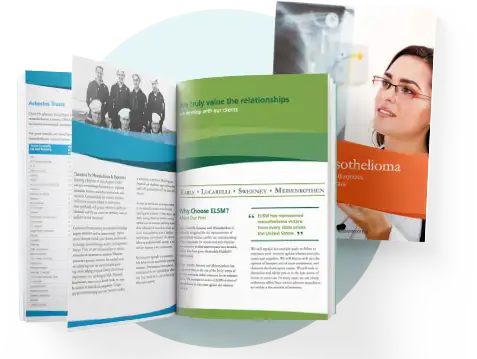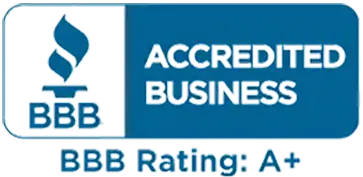Talc & Asbestos in Makeup: A Complete Guide
As consumers become more aware of what’s going in and on their bodies, concern about talc in makeup is on the rise. Talc comes from the same sources as asbestos, and some testing has found asbestos contamination in makeup samples. Asbestos exposure has been linked to mesothelioma, among other diseases. But is makeup with talc a health hazard?
What Is Talc and Why Is It in Makeup?
Talc is a naturally occurring mineral that’s odorless, colorless and very stable, meaning it doesn’t break down easily. In its pure form it has a shiny appearance, and as a powder, it absorbs moisture easily. These traits have made talc in makeup highly valued because it can:
- Be used as an affordable filler
- Create an opaque appearance
- Prevent caking
- Smooth the product and improve its feel
However, recent negative attention around this common cosmetic ingredient has placed the focus on another talc fact. It comes from the same places as asbestos and, in some cases, contains asbestos when it is mined. While processing techniques are used to get rid of the asbestos, recent testing indicates these strategies aren’t completely effective.
Regulations on Talc Usage
The use of talc in makeup isn’t banned or even regulated in the U.S. In fact, the FDA has only banned 11 ingredients in cosmetics, including chloroform, mercury compounds and certain preservatives and aerosols. The FDA also doesn’t require manufacturers to perform any specific tests on their products before putting them on the market—including testing possible asbestos products.
In addition, the FDA only has post-market authority in the cosmetics industry. That means they don’t review makeup before it goes on the market—as they would for a new drug, for example. They do perform testing for asbestos in makeup after it hits the market. If they find contamination, they’ll typically issue consumer warnings and work with companies to remove the products from shelves.
The FDA also sets testing guidelines for the cosmetics industry. Most recently, the Modernization of Cosmetics Regulation Act of 2022 set a modern standard method for asbestos testing, which helps ensure that all testing is accurate. The act is the most comprehensive update to federal cosmetics law since 1938, but it still doesn’t require testing for asbestos.
Without a pre-market testing requirement, talc in makeup could still be contaminated with asbestos.
Health Risks of Talc in Makeup
Using makeup with asbestos could be hazardous to your health. In powder form, asbestos releases microscopic fibers into the air that cause serious diseases when inhaled. It’s linked with mesothelioma and lung, ovarian and laryngeal cancer, plus respiratory diseases like asbestosis. Many types of makeup that use talc are powders and are applied to the face, making them especially dangerous if they’re contaminated with asbestos.
Asbestos is an invisible hazard, especially in unregulated products like makeup, and it can take decades for exposure to develop into disease. That makes it hard to directly link talc in makeup to mesothelioma and other diseases. One study did find that 62% of mesothelioma cases in women are likely non-occupational, meaning exposure didn’t occur on the job. That’s compared with just 14% of cases in men.
What Makeup Has Talc in It?
Most types of makeup with talc are powder products, but they can also be liquids or creams. The Environmental Working Group (EWG) maintains a database of over 2,000 beauty products that contain talc. The most common are:
- Blush
- Body powder
- Eye shadow
- Face powder
- Foundation

A complete guide delivered next day to your doorstep. Treatment Information, top doctors & cancer centers, financial assistance and more.
How to Avoid Asbestos in Makeup
It’s important for anyone to know what’s in the products you bring into your home and use on your body. While not all talc products contain asbestos, testing has shown that some of them do. Here’s how to avoid asbestos-contaminated talc in makeup:
Be Aware of Companies Known for Asbestos in Makeup
Many companies have sold cosmetic products that contain asbestos-contaminated talc. These brands are well-known household names, and many even market directly to children. These companies include:
- Avon
- Beauty Plus Global Inc.
- Chanel Inc.
- Claire’s
- Colgate-Palmolive
- Coty
- Estée Lauder Companies Inc.
- Johnson & Johnson (J&J)
- Justice
- L’Oréal USA
- Maybelline New York
Know Which Cosmetics Have Tested Positive for Asbestos
The FDA and EWG have conducted testing on makeup containing talc. In 2019, the FDA tested 52 products, and found asbestos in 9 of them:
- Beauty Plus City Color Collection Matte Blush (Fuchsia)
- Beauty Plus City Color Cosmetics Timeless Beauty Palette
- Beauty Plus City Color Bronzer (Sunset)
- Beauty Plus City Color Shimmer Bronzer (Caramel)
- Beauty Plus Global Contour Effects Palette 2
- Claire’s JoJo Siwa Makeup Set
- Claire’s Eye Shadows
- Claire’s Compact Powder
- Claire’s Contour Palette
FDA testing of 50 samples in 2021 and 2022 found no asbestos. In 2020, EWG independently tested 21 samples of talc in makeup and found asbestos in the following products:
- Beauty Glazed Gorgeous Me Eye Shadow Tray Palette
- IQ Toys Princess Girl’s All-in-One Deluxe Makeup Palette
- Jmkcoz 120 Colors Eyeshadow Palette
Perhaps the most famous beauty product containing asbestos-contaminated talc is Johnson & Johnson Baby Powder, which was recalled in 2019 and permanently taken off the market in 2021. While the company denies its products contain asbestos or cause diseases like mesothelioma, courts have awarded billions of dollars to victims.
Read Labels and Understand Ingredients
Avoiding talc in makeup altogether is the only sure way you can avoid asbestos contamination. The FDA requires that cosmetics be labeled with their ingredients, so knowing how to read these labels is essential. Look for the alternative terms “talcum powder” or “magnesium silicate,” in addition to talc. And keep in mind that shopping for “organic” or “natural” cosmetics won’t rule out talc or asbestos. Because both of these ingredients are naturally occurring minerals, these terms don’t mean the product is free of them.
Shop Talc-Free Brands
Many makeup brands, including Chanel, L’Oreal and Revlon, offer some talc-free products—but not all, so you’ll still need to check the ingredients list. In-addition, many websites, including Sephora and Macy’s, allow you to filter makeup options to show “talc-free” brands or products.
If you’d rather not have to think about talc in makeup at all, here are some brands that don’t use it in any of their products:
- 100% Pure
- ATHR Beauty
- Burt’s Bees
- CoverFX
- Glossier
- Han Skincare Cosmetics
- Haus Labs
- Honest Beauty
- ILIA
- Jane Iredale
- Kosas
- LAWLESS
- Megababe
- Milk Makeup
- MOB Beauty
- PYT Beauty
- RMS Beauty
- Saie
- theBalm Cosmetics
- Tower 28
- Vapour Beauty
What to Do If You’ve Used Makeup With Talc
If you’ve used makeup with talc, discuss your concerns with your doctor. It’s also important to be aware of the symptoms of asbestos-related diseases. The earlier these conditions are diagnosed, the better the outcome.
If you or a family member has been diagnosed with mesothelioma, you may be able to get compensation for medical bills and pain and suffering. The first step is to contact a lawyer and determine how you were exposed to asbestos—and whether it was due to talc in makeup. An experienced team of attorneys, like those at the law firm of Early, Lucarelli, Sweeney and Meisenkothen, can help you investigate possible asbestos exposure and determine who is responsible.
In one recent case involving asbestos-contaminated talc makeup, our attorneys were able to secure a $5 million settlement for a female client who had used Coty Loose Face Powder extensively and was diagnosed with mesothelioma.
If you have questions about asbestos in makeup or think you’ve been exposed to asbestos, contact us today. We can provide the help you need.
FAQs
Is talc in makeup harmful to my health?
Talc alone is safe to use in makeup. The issue arises when the talc is contaminated with asbestos, which is extremely hazardous to your health when inhaled. Because the cosmetics industry is not strictly regulated and asbestos testing is not required, some people choose to avoid talc products altogether.
What are the side effects of talc in makeup?
Talc in makeup that isn’t contaminated with asbestos shouldn’t have any side effects. However, if makeup does contain asbestos—especially if it’s in powder form—it can release the small fibers into the air. When inhaled, asbestos fibers get lodged in the lungs and cause inflammation, scarring, respiratory illness and cancer, including mesothelioma.
How is the use of talc-based cosmetics linked to mesothelioma?
Talc is a naturally occurring mineral that’s made in the same geologic formations as asbestos, another mineral. That means some talc supplies are contaminated with asbestos, and while there are processes to get rid of it, they’re not always effective. If asbestos-contaminated talc makes its way into cosmetics and is then inhaled, it may cause mesothelioma.
Are there safer alternatives to talc in makeup?
Cosmetic manufacturers use several different ingredients to replace talc in makeup, including arrowroot powder, cornstarch, kaolin clay, oat flour and rice starch. For example, Johnson & Johnson has replaced its talc-based baby powder with a cornstarch-based version.
Request a Free Case Evaluation
Request a free case evaluation now if you or someone you love has been diagnosed with mesothelioma. The evaluation will cost you nothing. Our lawyers will travel to visit you at your convenience or conference call with you over the phone. We understand how difficult a time this is for you and will assist in any way that we can. You can also call us toll-free at 1-800-336-0086 at any time.




